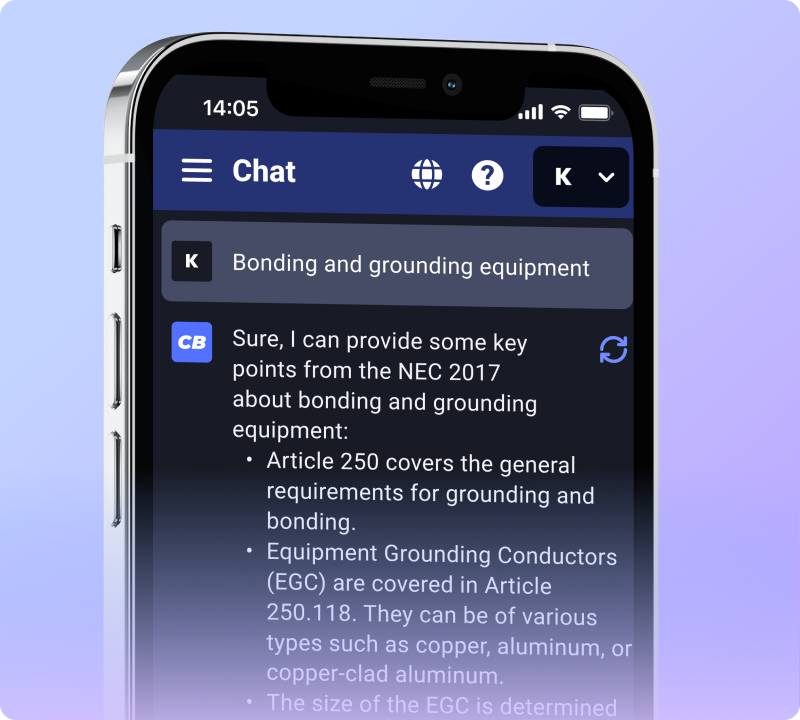Dealing with electrical systems in your home can be tricky. The MN electrical code residential sets the safety standards we must all follow. This article breaks down those codes and how they apply to you in clear steps.
Keep reading for easy guidance.
Key Takeaways
- The 2023 National Electrical Code (NEC) updates include new safety measures for residential wiring, focusing on kitchens and bathrooms.
- Homeowners must use GFCI protection in wet areas to reduce the risk of electric shocks. Checking these devices regularly ensures they function correctly when needed.
- Minnesota adopted the 2023 NEC, replacing the previous codes and emphasizing stricter grounding, bonding, and energy efficiency regulations.
- Following MN Electrical Code Residential Standards not only keeps homes safe but also compliant with state laws. Homeowners should stay informed about changes by accessing state bulletins and resources.
- Special regulations apply to agricultural buildings in Minnesota, requiring specific wiring standards to protect against moisture and dust hazards.
Understanding Electrical Codes and Standards
Electrical codes and standards ensure safety in residential wiring. They outline the necessary regulations every homeowner must follow to maintain a secure environment.
Importance of following codes and standards
Following codes and standards ensures safety in residential electrical installations. The Minnesota Electrical Code sets clear guidelines for wiring, equipment, and apparatus used in homes.
Adhering to these regulations protects homeowners from hazards like electrical fires and shocks.
Complying with the National Electrical Code (NEC) helps maintain consistency across different projects. Understanding residential building standards directly impacts the quality of work done by licensed electrical contractors.
Accurate adherence to standards promotes safe environments in kitchens, bathrooms, and throughout the home.
Overview of the 2023 National Electrical Code
The 2023 National Electrical Code (NEC) introduces several updates to enhance safety in residential electrical systems. This edition emphasizes clear guidelines for electrical wiring, receptacles, and circuit requirements.
The changes reflect evolving technology and address modern challenges in home electrical inspection.
Key topics include revised outlet height requirements and increased focus on GFCI protection in specific locations like kitchens and bathrooms. Homeowners must understand these adjustments to ensure compliance with the updated standards.
Following the NEC helps promote electrical safety in homes while meeting building code requirements effectively.
Differences from the 2020 NEC
The 2023 National Electrical Code (NEC) includes several key changes from the previous 2020 NEC. One major change focuses on electrical wiring standards for residential properties.
It enhances safety measures in kitchens and bathrooms, specifically addressing circuit requirements for these areas. New guidelines also clarify regulations concerning hazardous locations within homes.
Other updates streamline compliance processes. They provide clearer definitions and examples of code requirements, making it easier for homeowners to understand their obligations. These differences aim to improve electrical safety while keeping up with industry advancements.
Moving forward, homeowners should be aware of essential resources that provide information on the MN Electrical Code.
Key Resources for Understanding MN Electrical Code
Key resources provide insights into the MN Electrical Code. Homeowners can access state bulletins and code documents for clear guidance.
Bulletins and code resources provided by the state
The state offers various bulletins and code resources for homeowners. These tools help you understand the MN Electrical Code better. They cover important topics, such as electrical inspections and residential electrical standards.
You can find guidelines on kitchen circuit requirements and bathroom electrical standards in these resources. They also provide information on safety measures to ensure compliance with electrical code requirements.
Homeowners should review these materials regularly to stay informed about updates in the National Electrical Code (NEC) and local regulations.
Special regulations for agricultural buildings
Special regulations for agricultural buildings ensure safety and compliance. These structures often require unique electrical standards due to their specific uses, such as housing livestock or storing equipment.
Electrical code compliance for agricultural buildings includes special wiring requirements. For instance, the National Electrical Code (NEC) mandates certain protective measures against potential hazards like moisture and dust.
Farmers must also follow guidelines that address lighting and outlets in these settings. Understanding these residential electrical standards helps prevent accidents and protects investments in agriculture.
General safety guidelines
Safety remains a top priority for homeowners. Always ensure that your electrical installations meet the National Electric Code (NEC) standards. Use GFCI protection in wet areas like kitchens and bathrooms to prevent shocks.
Avoid overloading circuits, as this can lead to fires and equipment damage.
Proper grounding of all outlets protects against electrical faults. Inspect wiring regularly to detect wear or damage early. Familiarize yourself with general safety guidelines for residential electrical code compliance in Minnesota.
Following these basic rules helps maintain a safe living environment and reduces risks associated with electrical hazards.
Residential Electrical Standards
Residential electrical standards ensure safety and functionality in your home. They outline essential wiring requirements and regulations for hazardous areas. Understanding these standards helps you meet legal obligations.
Homeowners must pay attention to licensing and inspection guidelines as well. Explore the specifics of these regulations to keep your home safe and efficient.
General wiring requirements
General wiring requirements play a crucial role in residential electrical standards. These guidelines ensure safety and efficiency in your home’s electrical system. All wiring must comply with the National Electrical Code (NEC).
Use proper gauge wire based on the circuit loads to avoid overheating.
Install all outlets, switches, and fixtures securely. Grounding is essential for preventing electrical shock. Follow specific codes when working with hazardous locations. Always hire licensed professionals for installation and inspection to meet Minnesota’s strict regulations on home electrical standards.
Specific regulations for hazardous locations
Hazardous locations require strict adherence to specific regulations. The Minnesota Electrical Code outlines guidelines for areas prone to fire or explosion risks. These regulations ensure safety in homes and workplaces where flammable materials may exist.
For instance, installation of electrical equipment must meet special standards in these environments. Proper wiring techniques minimize the chances of sparks igniting combustible substances.
Homeowners should also use devices rated for hazardous locations to enhance safety measures. Following these residential electrical code updates is crucial for protecting lives and property from dangerous incidents.
Licensing and inspection guidelines
Licensing ensures that electricians meet safety standards in Minnesota. Electricians must obtain a license before they can perform any electrical work. The state issues several types of licenses based on the electrician’s level of expertise.
Homeowners should always hire licensed professionals for their projects.
Inspections follow all major electrical installations. Local authorities typically conduct these inspections to ensure compliance with the National Electrical Code (NEC). They check for proper wiring, correct grounding, and adequate protection against hazards.
Staying aware of these licensing and inspection guidelines helps homeowners maintain safe electrical systems in their homes.
Frequently Asked Questions
Homeowners often have many questions about electrical standards. They want clear answers to ensure their homes are safe and compliant.
Common concerns for homeowners
Homeowners face various concerns regarding electrical safety. Many worry about outdated wiring in older homes. Old systems may not meet current safety codes, leading to hazards. The National Electrical Code (NEC) sets minimum standards to prevent issues like fires or shocks.
Another common concern involves proper grounding and circuit protection. Homeowners often question the need for GFCI protection in wet areas, such as bathrooms and kitchens. Using Ground Fault Circuit Interrupters helps reduce the risk of electric shock, making homes safer for families.
Understanding MN Electrical Code residential standards can ease these concerns and ensure a safe living environment.
Minimum circuitry requirements for homes according to NEC
Homes must meet specific minimum circuitry requirements according to the National Electrical Code (NEC). These standards ensure safety and efficiency in electrical systems. Each residential unit needs at least one 120-volt circuit for general lighting and receptacles.
Additional circuits are required based on the number of bedrooms. Kitchens require separate circuits for appliances like refrigerators, microwaves, and dishwashers.
GFCI protection is mandatory in areas prone to moisture, such as bathrooms and kitchens. Local regulations may also dictate additional requirements that enhance safety. Be familiar with these electrical wiring regulations to guarantee compliance during installation or renovations.
Understanding MN Electrical Code Residential Standards Simplified helps homeowners stay informed about these crucial guidelines.
Proper use of GFCI protection
Minimum circuitry requirements for homes according to NEC connect closely to safety practices. Proper use of GFCI (Ground Fault Circuit Interrupter) protection can prevent serious electrical shocks.
Install GFCI outlets in locations where water and electricity may meet, like kitchens and bathrooms. These outlets cut off power if they detect a ground fault, helping protect users from electrocution.
Check your GFCI devices regularly by pressing the “test” and “reset” buttons. Doing this ensures they work correctly when needed. Follow the National Electrical Code (NEC) guidelines for GFCI installation and maintenance.
This will keep your home safe and compliant with current standards.
Changes and Updates in the Minnesota Electrical Code
Minnesota has recently adopted updates to its Electrical Code. Homeowners must understand these changes to ensure compliance and safety in their electrical systems.
Adoption info
Minnesota has adopted the 2023 National Electrical Code (NEC). This code sets the standards for electrical installations in homes. Homeowners must adhere to these rules to ensure safety and compliance.
The adoption of this code replaces previous versions, including the 2020 NEC.
Local building departments enforce these codes throughout the state. They conduct regular inspections to verify that all electrical work meets current standards. Homeowners should stay informed about updates and changes in regulations to maintain safe living environments.
Access reliable resources from state bulletins and official websites for guidance on any amendments.
Key changes for homeowners to be aware of
Homeowners should pay attention to recent changes in the Minnesota Electrical Code. The 2023 National Electrical Code (NEC) introduces new requirements for residential wiring. These updates emphasize safety and efficiency.
Home electrical inspection checklist items now include stricter rules on grounding and bonding.
Homeowners need to know about new regulations for energy efficiency as well. Changes impact lighting fixtures, outlets, and circuits. GFCI protection has expanded to include more areas within homes, especially kitchens and bathrooms.
Understanding these key changes helps homeowners maintain safety while improving their living spaces.
How to stay updated on future amendments
Staying current with amendments to the Minnesota Electrical Code is crucial for homeowners. Follow the Minnesota Department of Labor and Industry‘s website for updates. They regularly publish changes and new regulations related to electrical standards.
Local seminars and workshops also provide valuable information. These events often discuss recent updates in the National Electrical Code (NEC) or the state’s version of it. Signing up for newsletters from relevant authorities can help you receive timely notifications about upcoming changes as well.
Conclusion
Understanding MN Electrical Code Residential Standards helps homeowners stay safe. Following these codes ensures proper wiring and safety measures. Homeowners can avoid electrical hazards by knowing the rules.
Staying informed about updates keeps your home compliant and secure. Embrace these standards to protect your family and property.

